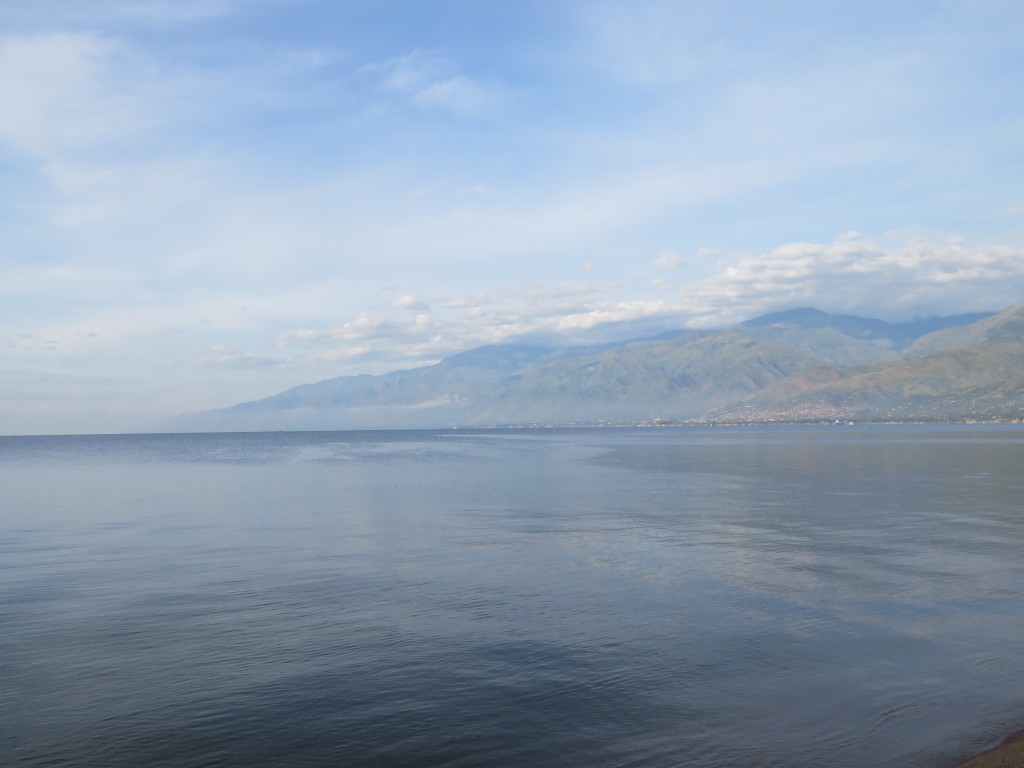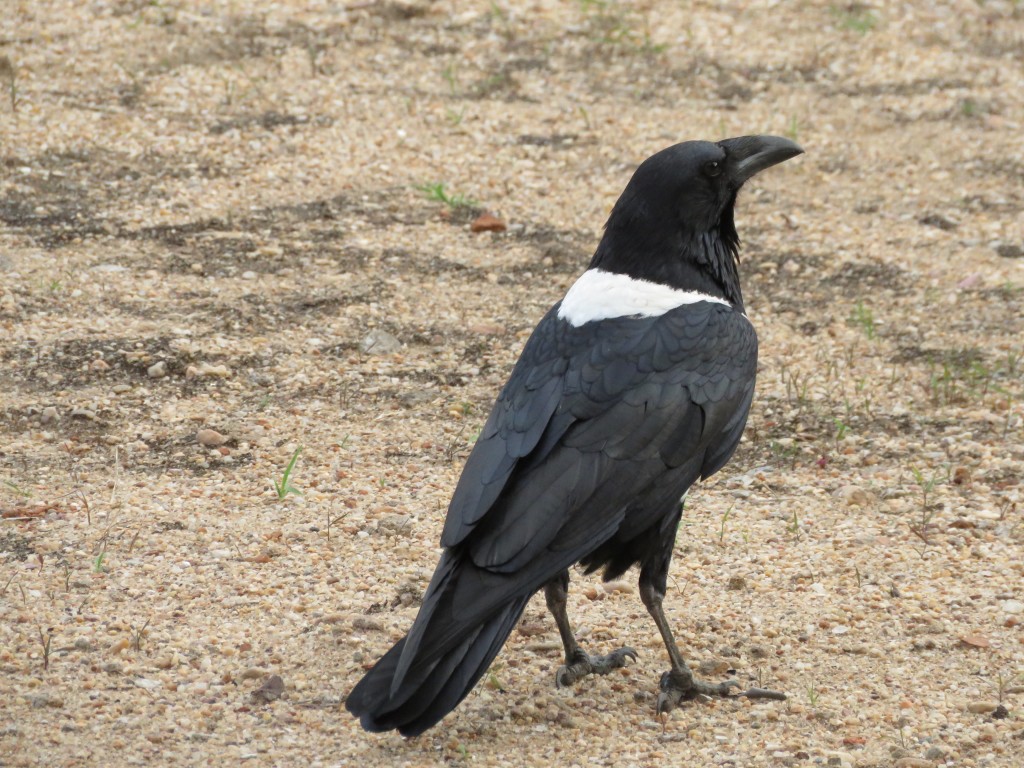I’m on the shores of the northernmost part of Lake Tanganyika, in the city of Uvira, Democratic Republic of Congo (DRC). The ecoregion here is the Albertine Rift Montane Forests Ecoregion (AT0101), one of three ecoregions that border the lake. The photo below shows the mountains that sweep down to the lake; now denuded in this area, but they would have been formerly rich forest. Certainly in remoter areas to the west there are still large parts of this ecoregion that are relatively intact – Kahuzi-Biega National Park for example, where I was lucky enough last year to sit with wild gorillas.

The WWF ecoregions are for the most part defined on the basis of terrestrial attributes, but some are shaped by freshwater or marine influences and all ecoregions have of course aquatic birds as part of their natural avifaunas. Imbibing a cold beer on the beach, I had an idea to write today about the freshwater birds of the ecoregion but…there are no birds here! Well, I finally found a few Pied Crows on the beach. A pretty sharp-looking crow, but not exactly exciting to a birder in this part of the world. This crow seems to occur abundantly everywhere in Africa where there are lots of people – it is the one species that I have recorded in every single ecoregion I’ve visited in Africa.

Just as well, because what I really wanted to write about is this lake. It belongs in the Wow category. Have a look at it on the map in the ecoregion link above. It is second among the world’s lakes, only to Lake Baikal, for both volume and depth. Its volume is thus greater than that of Lake Superior, whose shores I grew up on, which is the world’s largest lake by surface area but only third by volume. It is stunning to think that Lake Tanganyika, stretching out before me, accounts for one fifth of all the available fresh water in the entire world (thus excluding atmospheric water and polar ice caps). The lake is about 1800 km long and 50 km wide so that makes it a really monstrous lake but its depth is what allows it to nail second place in the volume category. it is very deep – dropping to 1470 m in the southern part. The depth is because it is situated along the Great African Rift where the continent is splitting itself into two. As Africa spins clockwise and crashes into Europe, the continent is fracturing in the east along a number of tremendous cracks. Millions of years in the future the Great African Rift will be even deeper and Lake Tanganyika will be a deep ocean channel separating chunks of the former Africa.
The volume? About 18,900 cubic kilometers of fresh water! Ironic that one of the greatest problems facing the city of Uvira is the difficulty of accessing fresh water for its inhabitants, many of which are refugees, among the three million internally displaced persons in this part of the DRC.
One of the interesting things about this lake, that distinguishes it from the other Great Lakes along the African Rift, is that it happens to be an extremely long lake aligned with the direction of the prevailing winds, at least during the dry season. At that time, for three or four months, relentless strong southerly winds push the waters up into the northern half. The lakes’ water level is probably a m or so higher in the north at that time but the thermocline (the sharply defined meeting place of colder fossil water of the depths and the warmer surface waters) oscillates up and down about 30 to 40 m, on a seasonal timescale. This up and down sloshing of huge volumes of water, albeit invisible to the human eye and on a seasonal time rhythm, squeezes up upswellings of deeper colder water. As occurs in all areas of cold upswellings, this results in high biological productivity. The lake is one of the great fish-producing areas of the world and the biological diversity of fish in the lake is impressive, with hundreds of endemic fish species.
If we go back a thousand years, Lake Tanganyika must have been an awesome place for birds, with its huge numbers of fish. Egrets, herons, cormorants, fish eagles, storks, and countless other water birds must have flourished here. So why have I posted a photo of a crow and why are there no birds here?! In part because the great fish numbers are a thing of the past. The lake is shared by four countries, the DRC, Burundi, Tanzania, and Zambia. Between the four countries there are more than 100,000 fisherman out on the lake. This is well in excess of a number that would allow for sustainable management. Fish are getting smaller and smaller, commercial fisheries of the past have gone under, and total yields are diminishing. This is a familiar story of a collapsing fishery because of unsustainable human pressure.
I’m here helping prepare a project which will contribute to more sustainable management of the fisheries. This is laudable but it is a far-off goal; getting fishing communities to agree on reducing fishing pressure, especially when four countries are involved, is a multi-generational mind-bogglingly difficult task. Its not going to be tomorrow that the great flocks of fish-eating birds are again seen in abundance on the lake. I may have to do my next blog on that about the time that the ocean channel forms…